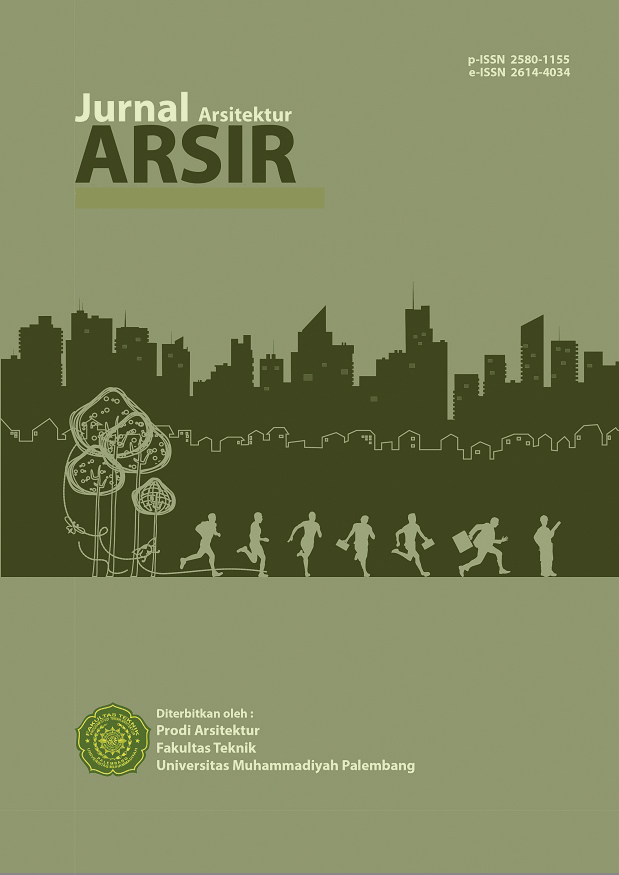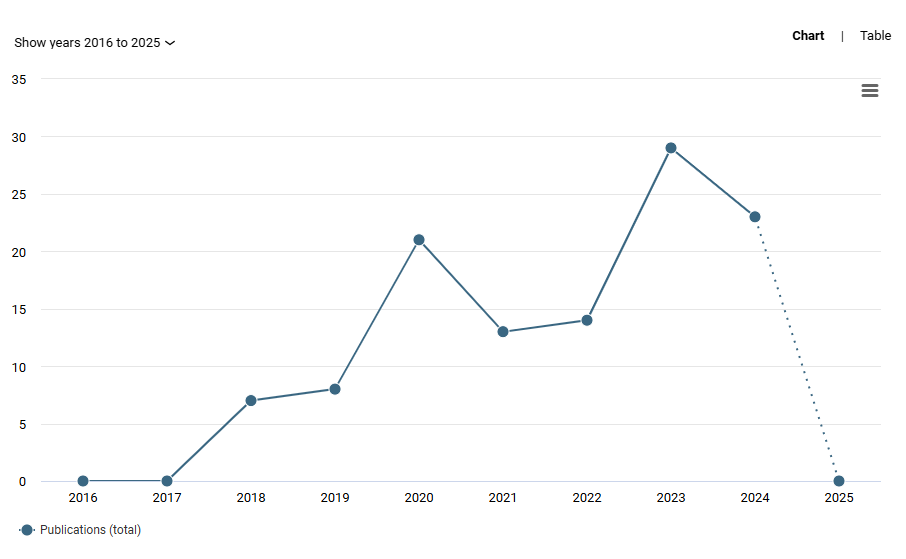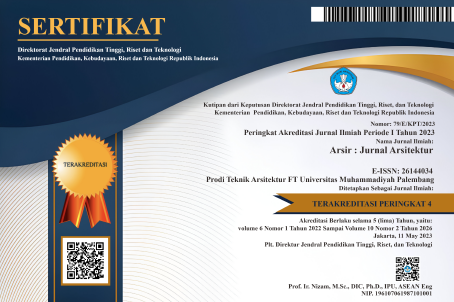From Pesantren Towards Ecopesantren: Sustainability Index Assessment and Improvement Recommendations
DOI:
https://doi.org/10.32502/arsir.v9i2.590Keywords:
ecopesantren, green space, cluster analysis, Google Earth, sustainability indexAbstract
As one of the educational institutions, pesantren have significant potential to contribute to sustainable development, both within the local context where they operate and in the broader environment. The aim of this study is to measure the sustainability index of pesantren and develop a typology based on space utilization characteristics to generate improvement recommendations that will enhance the sustainability index. The researcher formulated the sustainability index concept based on three parameters: the proportion of low-albedo roofs (white roofs), the proportion of trees (green space), and the proportion of water bodies (blue space) relative to the total land area. Additionally, data was collected on areas of buildings with non-white roofs (orange space) and open land areas (gray space). Dimensional data for the five parameters were obtained using Google Earth satellite images for 46 pesantren members of the Ecopesantren program, located across Sumatra and Java. Hierarchical cluster analysis was performed using the Wald method to categorize the pesantren and recommend strategies for enhancing their sustainability index. The analysis revealed that none of the pesantren had a sustainability index above 50%, primarily due to the limited use of white roofs and blue spaces. Five distinct clusters were identified: developed pesantren, pesantren toward development, pesantren with space competition, green pesantren, and compact pesantren. Specific recommendations for improving sustainability were proposed for each cluster type.
Downloads
Published
How to Cite
Issue
Section
License
Copyright (c) 2025 Zuber Angkasa, Erfan M Kamil, Reny Kartika Sary, Meldo Andi Jaya

This work is licensed under a Creative Commons Attribution-ShareAlike 4.0 International License.
Arsir: Jurnal Arsitektur (AJA) have CC-BY-SA or an equivalent license as the optimal license for the publication, distribution, use, and reuse of scholarly work.
Authors who publish Arsir: Jurnal Arsitektur (AJA) agree to the following terms: Authors retain copyright and grant the Arsir: Jurnal Arsitektur (AJA) right of first publication with the work simultaneously licensed under a Creative Commons Attribution License (CC BY-SA 4.0) that allows others to share (copy and redistribute the material in any medium or format) and adapt (remix, transform, and build upon the material) the work for any purpose, even commercially, with an acknowledgement of the work's authorship and initial publication in Arsir: Jurnal Arsitektur (AJA). Authors are able to enter into separate, additional contractual arrangements for the non-exclusive distribution of the journal's published version of the work (e.g., post it to an institutional repository or publish it in a book), with an acknowledgement of its initial publication in Arsir: Jurnal Arsitektur (AJA). Authors are permitted and encouraged to post their work online (e.g., in institutional repositories or on their website) prior to and during the submission process, as it can lead to productive exchanges as well as earlier and greater citation of published work (see The Effect of Open Access).
![]()
Work is distributed below This work is licensed under a Creative Commons Attribution-ShareAlike 4.0 International License.










